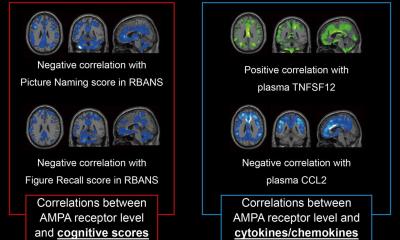Image source: We Are Covert, SARS-CoV-2 illustration (08), marked as public domain
News • Epidemilogical study shows
Covid variant B.1.1.7.: A lot more dangerous than the original form
The highly infectious variant of Covid-19 discovered in Kent, which swept across the UK last year before spreading worldwide, is between 30 and 100 per cent more deadly than previous strains, new analysis has shown.
A pivotal study, by epidemiologists from the Universities of Exeter and Bristol, has shown that the SARS-CoV-2 variant, B.1.1.7, is associated with a significantly higher mortality rate amongst adults diagnosed in the community compared to previously circulating strains. The study is published in the British Medical Journal.
SARS-CoV-2 appears able to mutate quickly, and there is a real concern that other variants will arise with resistance to rapidly rolled out vaccines
Leon Danon
The study compared death rates among people infected with the new variant and those infected with other strains. It showed that the new variant led to 227 deaths in a sample of 54906 patients – compared to 141 amongst the same number of closely matched patients who had the previous strains. With the new variant already detected in more than 50 countries worldwide, the analysis provides crucial information to governments and health officials to help prevent its spread. Robert Challen, lead author of the study from the University of Exeter said: “In the community, death from Covid-19 is still a rare event, but the B.1.1.7 variant raises the risk. Coupled with its ability to spread rapidly this makes B.1.1.7 a threat that should be taken seriously.”
The Kent variant, first detected in the UK in September 2020, has been identified as being significantly quicker and easier to spread, and was behind the introduction of new lockdown rules across the UK from January. The study shows that the higher transmissibility of the Kent strain meant that more people who would have previously been considered low risk were hospitalised with the newer variant.
Having analysed data from 54609 matched pairs of patients of all age-groups and demographics, and differing only in strain detected, the team found that there were 227 deaths attributed to the new strain, compared to 141 attributable to earlier strains. Leon Danon, senior author of the study from the University of Bristol said: “We focussed our analysis on cases that occurred between November 2020 and January 2021, when both the old variants and the new variant were present in the UK. This meant we were able to maximise the number of “matches” and reduce the impact of other biases. Subsequent analyses have confirmed our results. SARS-CoV-2 appears able to mutate quickly, and there is a real concern that other variants will arise with resistance to rapidly rolled out vaccines. Monitoring for new variants as they arise, measuring their characteristics and acting appropriately needs to be a key part of the public health response in the future.”
Ellen Brooks-Pollock from the University of Bristol expanded: “It was fortunate the mutation happened in a part of the genome covered by routine testing. Future mutations could arise and spread unchecked”
Source: University of Exeter
13.03.2021











